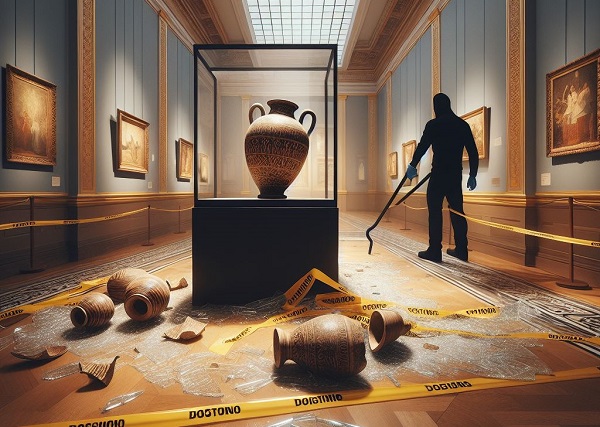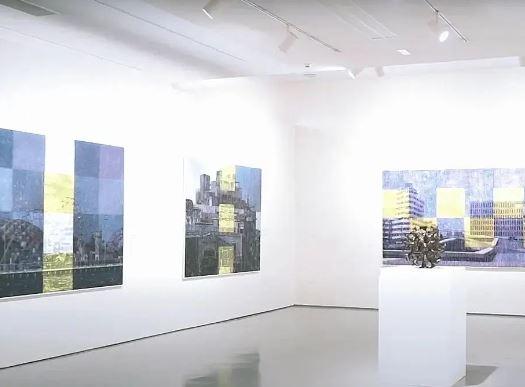Is it Right to Vandalise Art as a Form of Protest?

Art has long been a medium for expressing dissent, provoking thought, and challenging societal norms. However, the line between legitimate protest and vandalism becomes blurred when artworks themselves become targets of activism. The debate over whether it is right to vandalise art as a form of protest is multifaceted, surrounding considerations of free expression, cultural heritage, and the effectiveness of activism.
The facts
On Sunday, two climate activists made a bold statement by throwing soup at the protective glass encasing the Mona Lisa in the Louvre Museum in Paris. They vocalised slogans advocating for a sustainable food system, amplifying their message amid ongoing protests by French farmers, who are raising concerns about various issues, including low wages.
In a video shared on social media, two women wearing t-shirts which had the words “FOOD RIPOSTE” were captured breaching a security barrier to approach Leonardo da Vinci’s masterpiece, the Mona Lisa. In a daring move, they proceeded to hurl soup at the glass protecting the renowned artwork.
The tossing of the soup was done as they shouted “What’s the most important thing? Art, or right to healthy and sustainable food?”
The arguments
Vandalism, by its very nature, entails the destruction or defacement of property, often in a manner that is unauthorised and intended to cause harm or disruption. When applied to artworks, this act takes on added significance, as it involves not just the destruction of physical objects but also the erasure of cultural heritage and artistic expression.
Proponents of art vandalism as a form of protest argue that it can serve as a powerful tool for drawing attention to social injustices, political repression, or environmental crises.
By targeting symbols of authority or privilege, activists aim to disrupt complacency and provoke dialogue about pressing issues. In some cases, the shock value of art vandalism can motivate public opinion and propel change where traditional forms of protest have failed.
Furthermore, proponents point to historical examples where art vandalism has been instrumental in effecting social change.
From the Suffragettes defacing public property to demand women’s rights to the destruction of symbols of colonialism during anti-colonial struggles, acts of vandalism have been woven into the fabric of protest movements throughout history.
However, critics argue that the destruction of art, regardless of the intent behind it, is a violation of cultural heritage and artistic integrity. They argue that artworks are not just objects but embodiments of human creativity, historical significance, and collective memory.
Vandalising them not only disrespects the artists who created them but also deprives future generations of the opportunity to engage with their cultural legacy.
Moreover, critics contend that art vandalism can be counterproductive, alienating potential allies and undermining the credibility of the protest movement.
Instead of sparking meaningful dialogue, it can serve to divide opinions and outshine the underlying message of the protest. In some cases, the act of vandalism may even garner sympathy for the targeted institution or artwork.
The question of whether it is right to vandalise art as a form of protest ultimately hinges on ethical considerations, including the balance between individual expression and collective responsibility versus confrontational tactics, and the importance of preserving cultural heritage.
While there is no easy answer to this question, it is clear that the debate will continue to shape the contours of activism and artistic expression for years to come.




